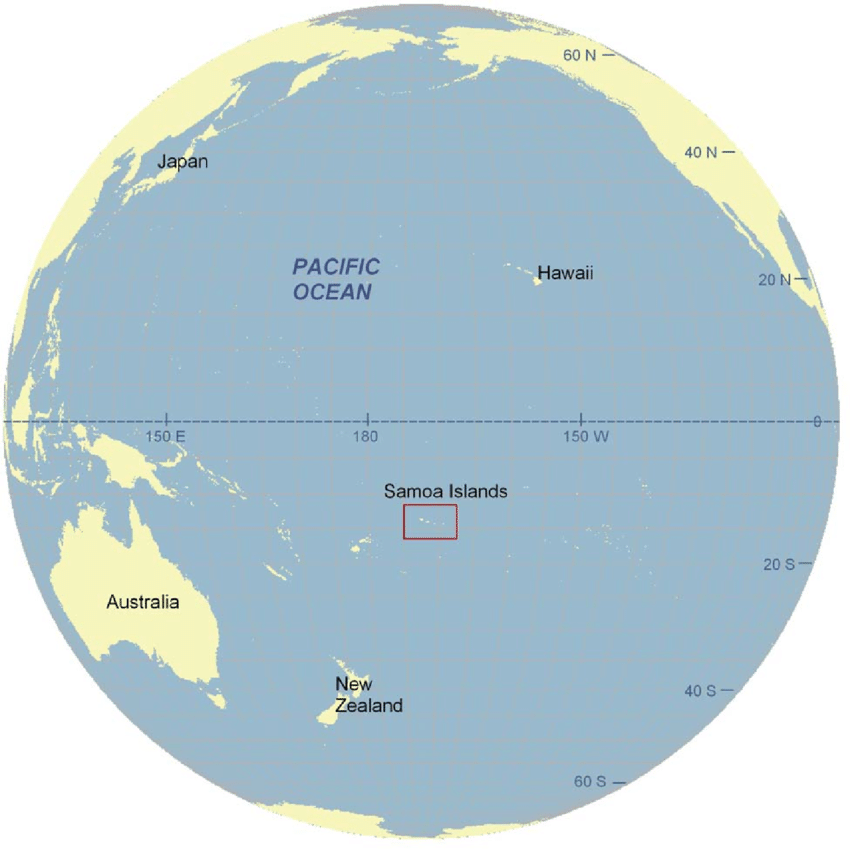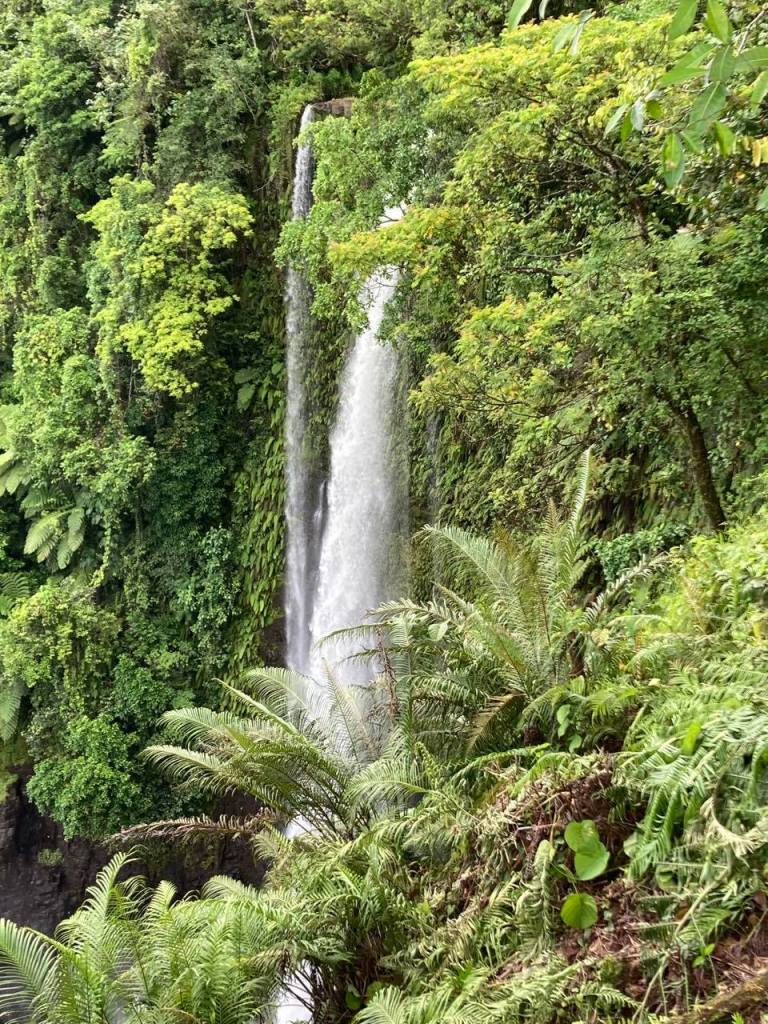In March 2023, myself and 14 members of my extended family flew out to the Island of Upolu in Samoa for a family gathering and to bring the ashes of my grandfather home. We all set up our base in Apia, the capital of Samoa and the largest city on Upolu.
Upolu is the main island of the Samoa, previously known as Western Samoa to differentiate it from American Samoa which separated in 1899. While not the largest island of the chain, Upolu has the highest population.
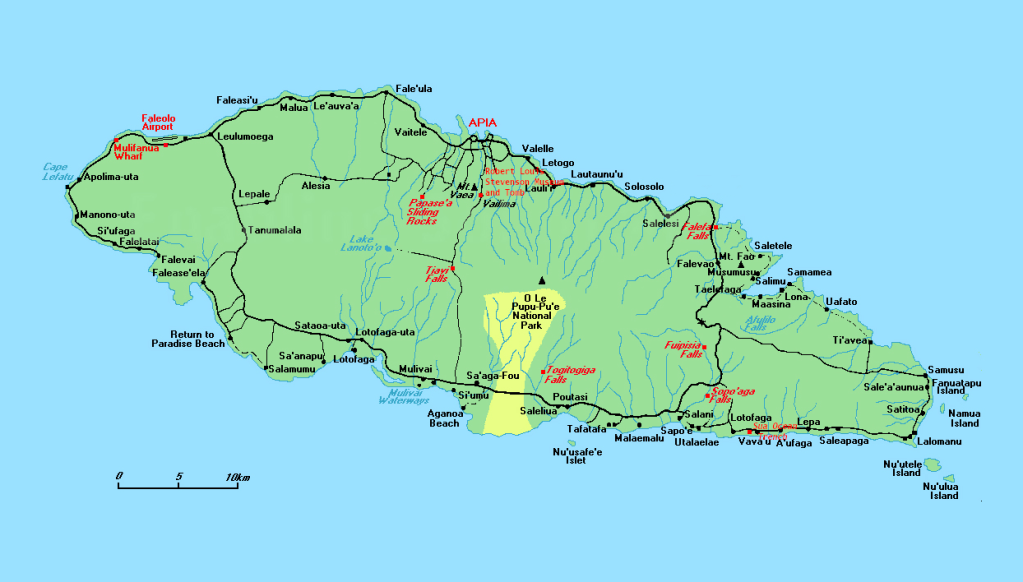
Apia
Apia is a mad mash of worlds. On one hand, there are wondrous resorts, restaurants and churches. On the other there are hovel markets, lines of shops, reminisant of south east Asia selling all manner of trinkets and knicknacks, sidewalk stalls, and so many taxis. Near the heart of the Apia is the clocktower.
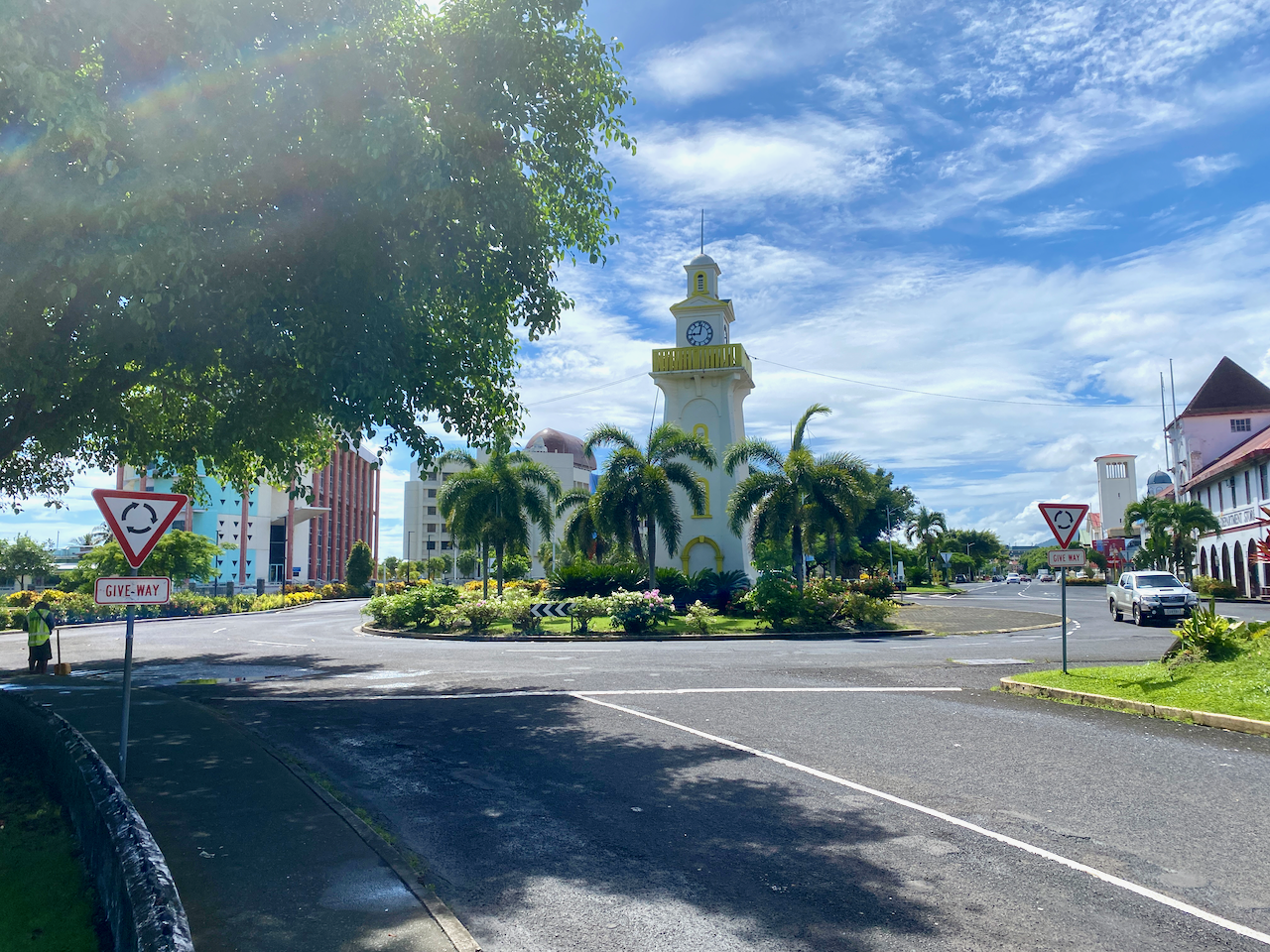
Around the bay from the resorts is the marina, with many ships and small boats docked. There’s also a more upmarket bar and restaurant area called The Edge and has views over the marina, the bay and Apia.
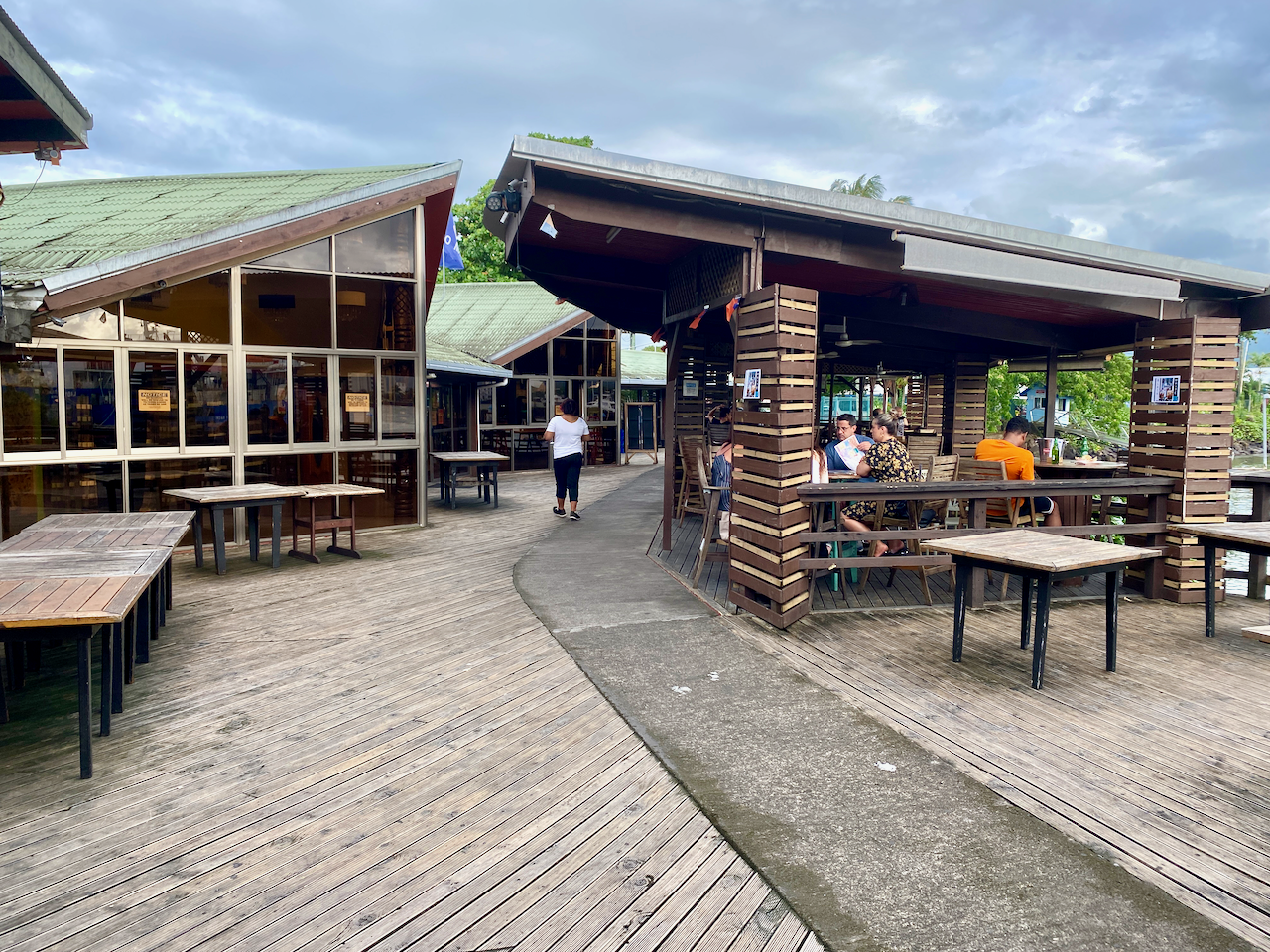
After a couple of choice cocktails during happy hour, we walked five minutes down the road to one of the best restuarants on the island, Paddles, stopping to admire the lights of Apia across the bay.
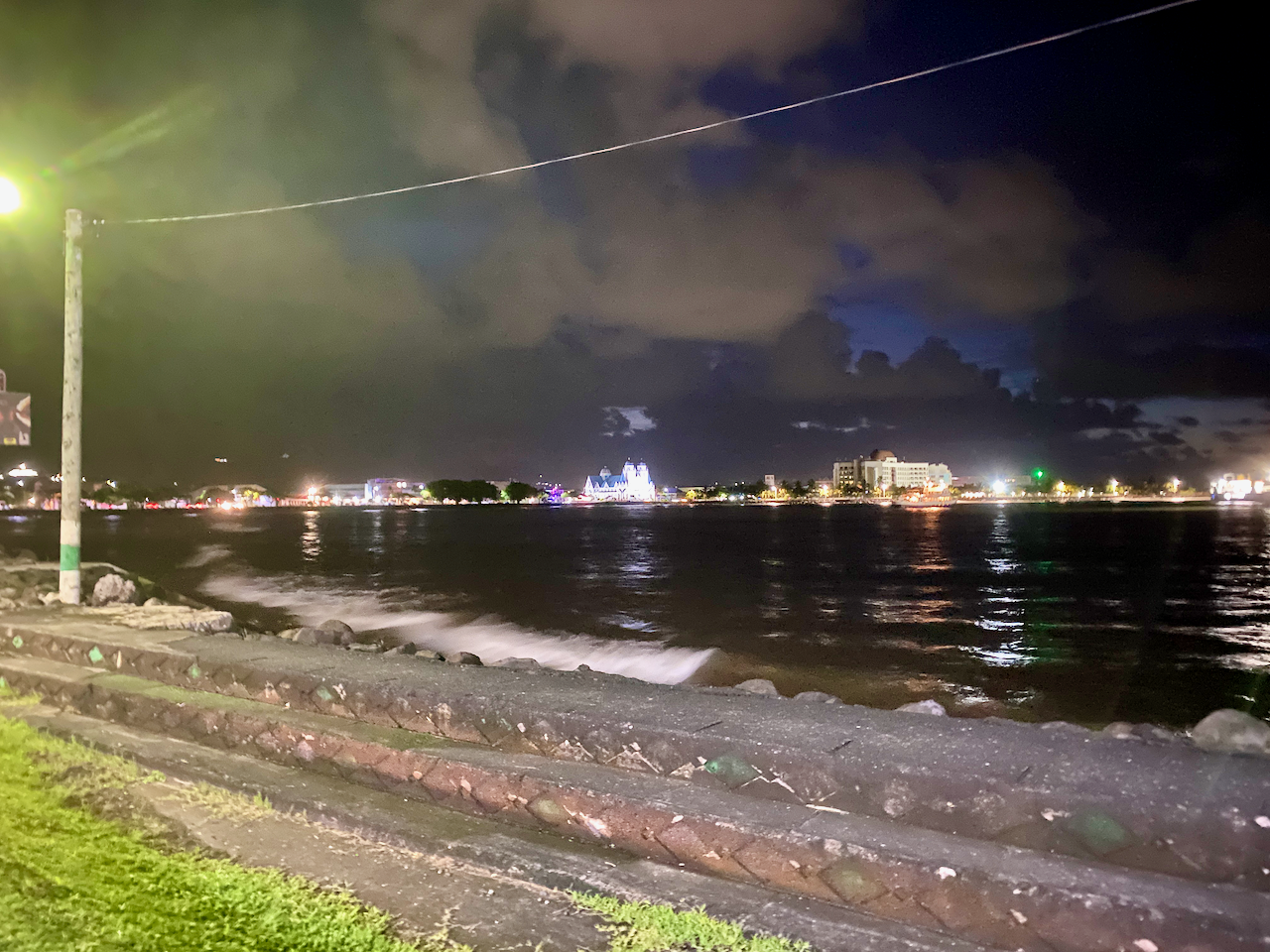
Garden Fale
While the other 14 members of my extended family stayed at a large and somewhat expensive resort, I went for the more local style at another resort a couple of kilometres away. And instead of an air conditioned room with TV, bar fridge, toilet and shower etc, I chose a garden fale. The fale is literally just a room with a roof and woven shades on each side pulled down for privacy and protection from the elements. It’s hot inside, but by partially pulling up some of the shades, a draft can pass through. Inside there is just a pair of mattresses on the floor, mosquito netting on each, a lockable safety box, a light and a pair of power outlets. This was my first experience with a fale of the kind, but not my last. It was a fun and sweaty experience, that I enjoyed, although in this case I only stayed two nights instead of the nine I’d booked due to bed bugs.
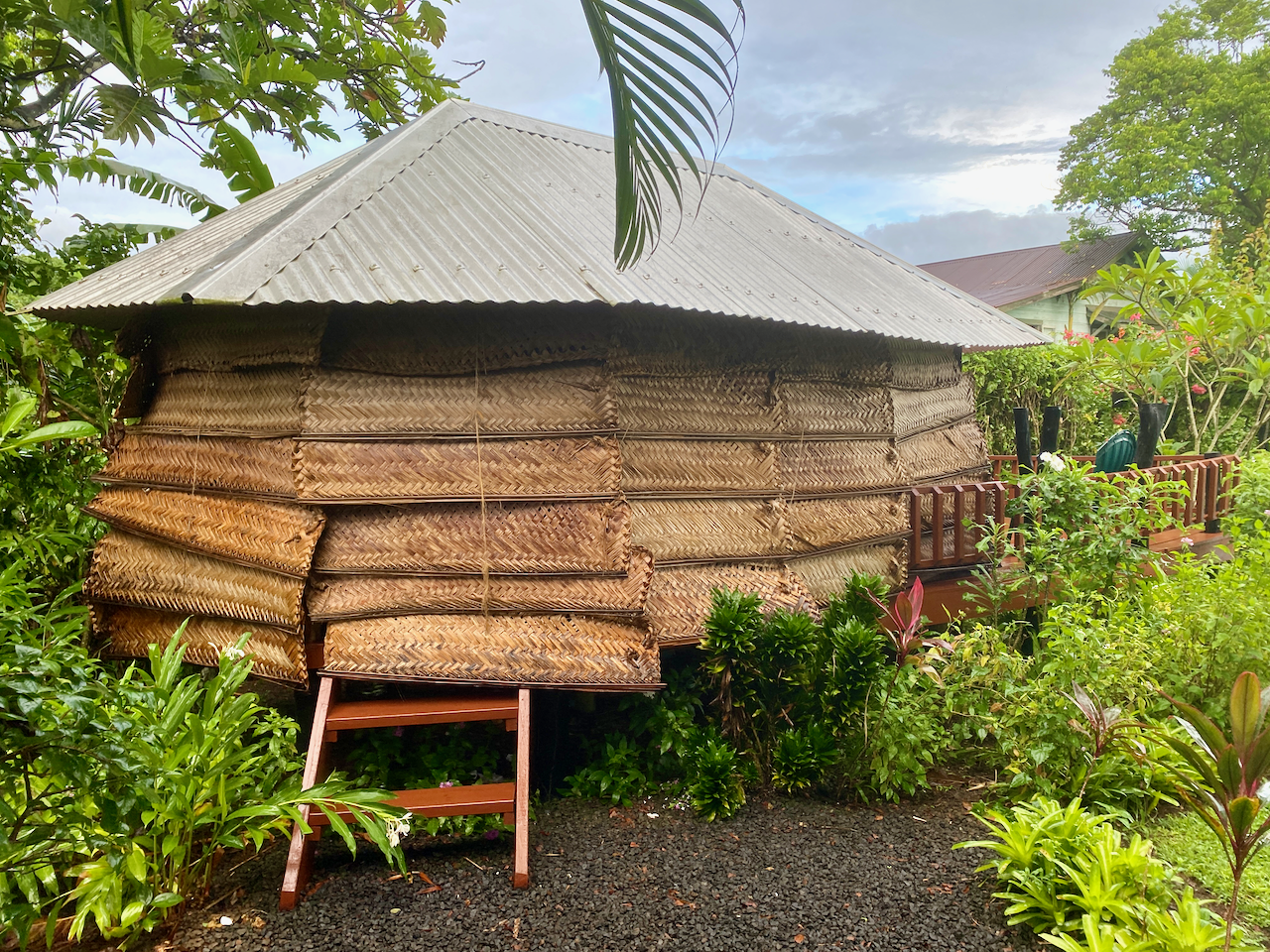
Fiafia Night
The resort where my extended family were staying hosts a Fiafia every Wednesday, so we decided to take part in this cultural event. There is much dancing and singing by our hosts, and a large buffet dinner with suckling pork on the menu. Someone even leaked to the crew that there was a birthday and they dragged my sister up to present her with a cake.
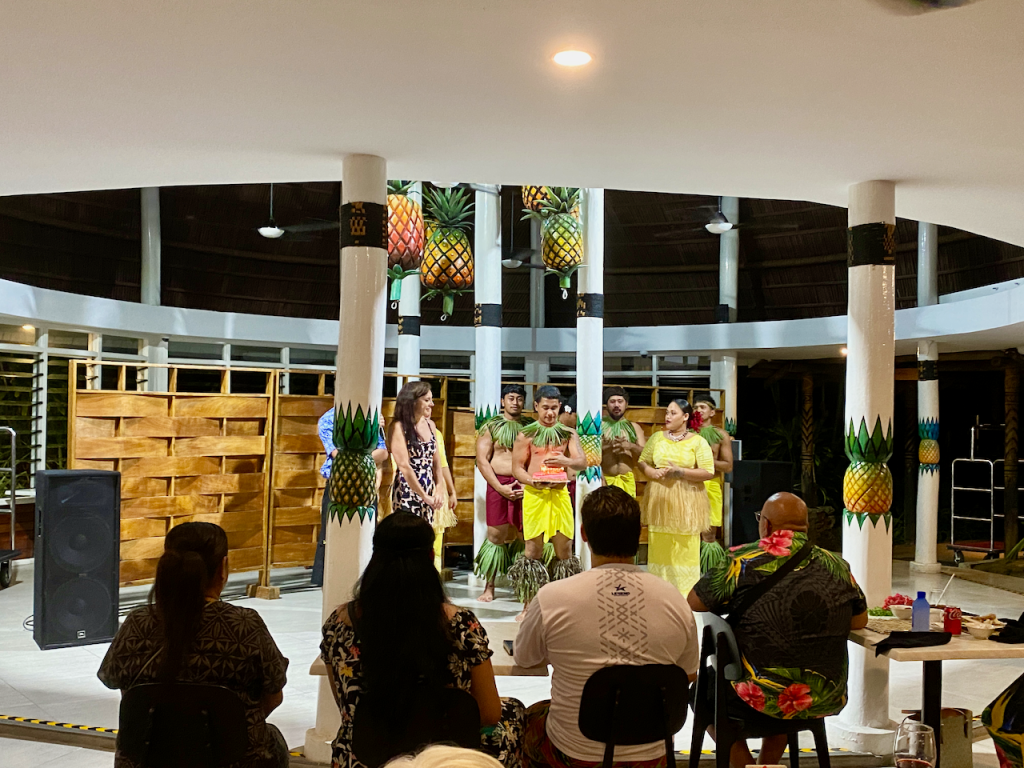
Then once the singing and dancing inside was done, we were herded outside for the fire show. An enjoyable experience.
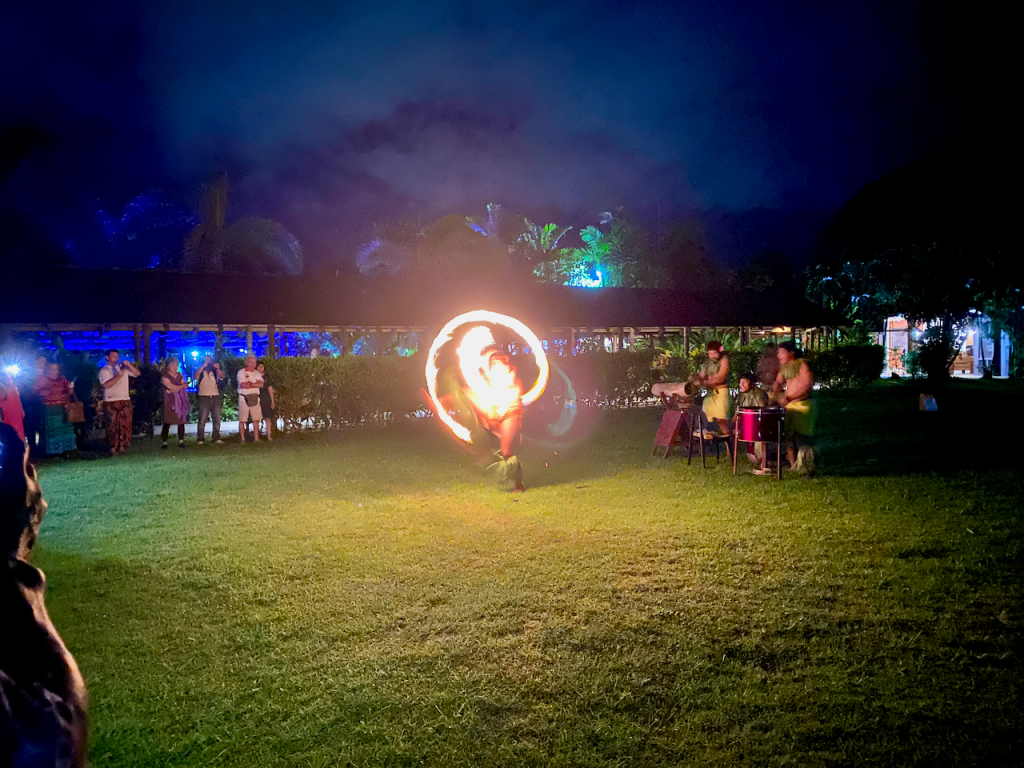
Sua Ocean Trench
Fifteen people is a lot to transport around the island, especially if the only people mover we could rent was a 12 seater. We decided to split the group and five of us headed on a road trip across and around the island to the To-Sua, which in samoan means ‘giant swimming hole’. It has salt water flowing in from one side, and at high tide, you can climb down the crazy lader and swim in it. A great day out for the WST20 entry fee.
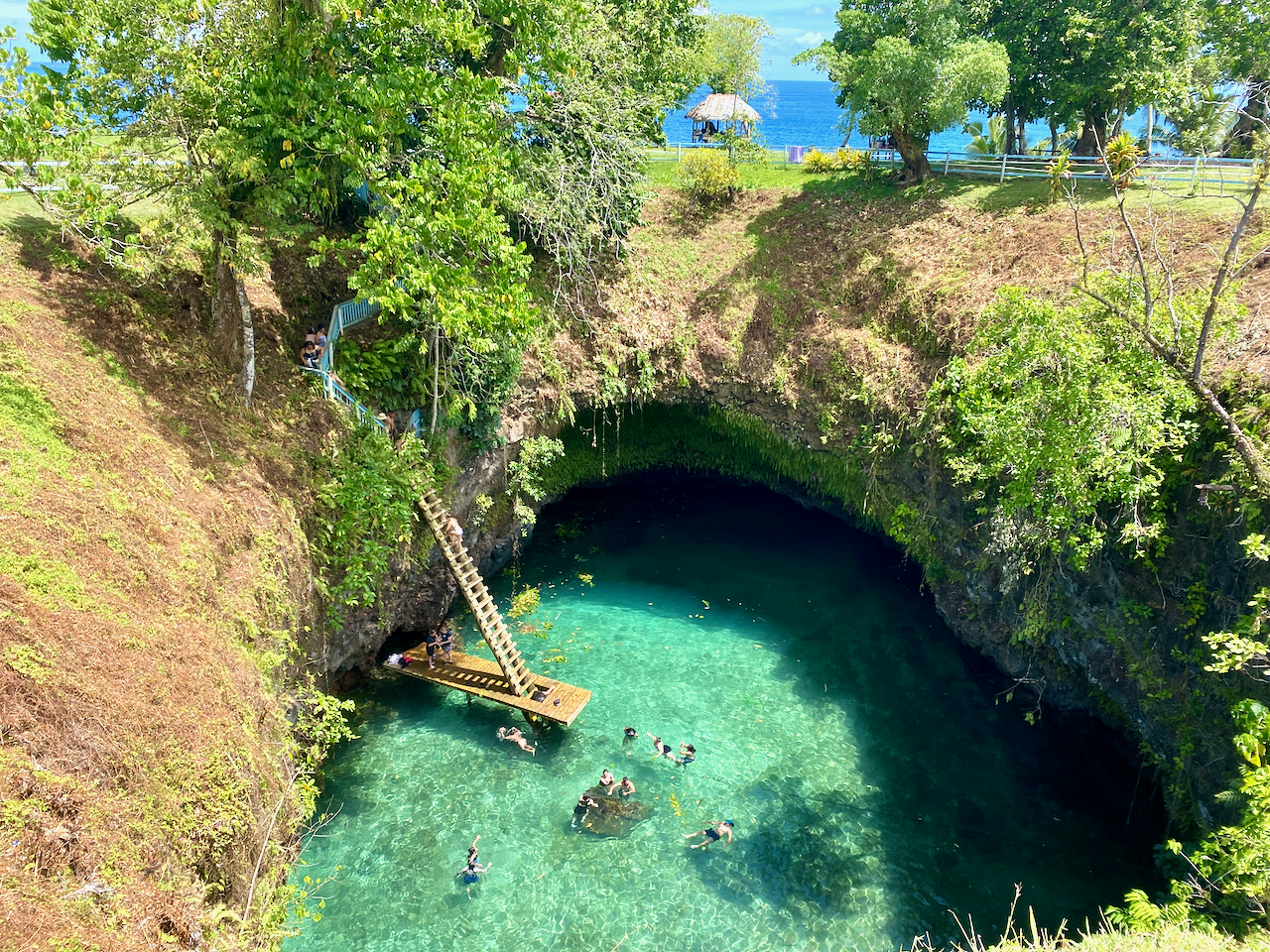
Waterfalls
On the way to and from the Sua Ocean Trench, we passed five waterfalls:
Papapapai Falls
In the centre of Upolu are the tallest falls in Samoa dropping 100m into a volcanic crater. There is a carpark on the side of the road and a short 10m trail through the the grass to the best views . There was no charge for this waterfall.
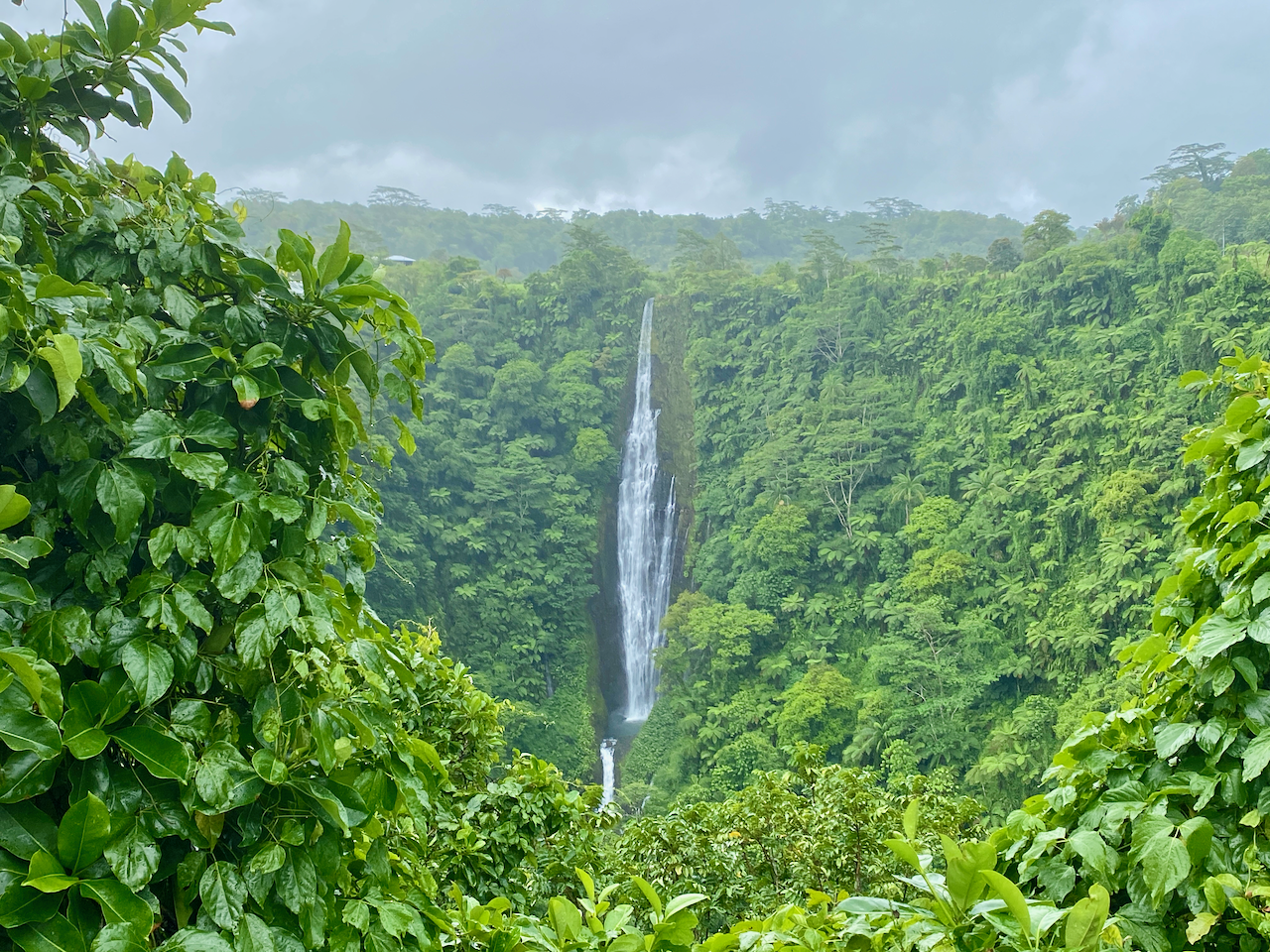
Togitogiga Waterfall
On the south side of Upolu is O le Pupu-Pue National Park, we followed a short road to a carpark. Then a short fairly flat 200m walk along a rocky track leads to a park with fales, a bbq, toilets and two pools, one above and one below the falls. The falls aren’t large, but gush down into the lower pool. It’s known to have been a place where great warriors of Samoa’s past swam. Four days later, we drove out to have another look with a different group, only to find that the falls were dry. How quickly things change. These falls are also free to visit.
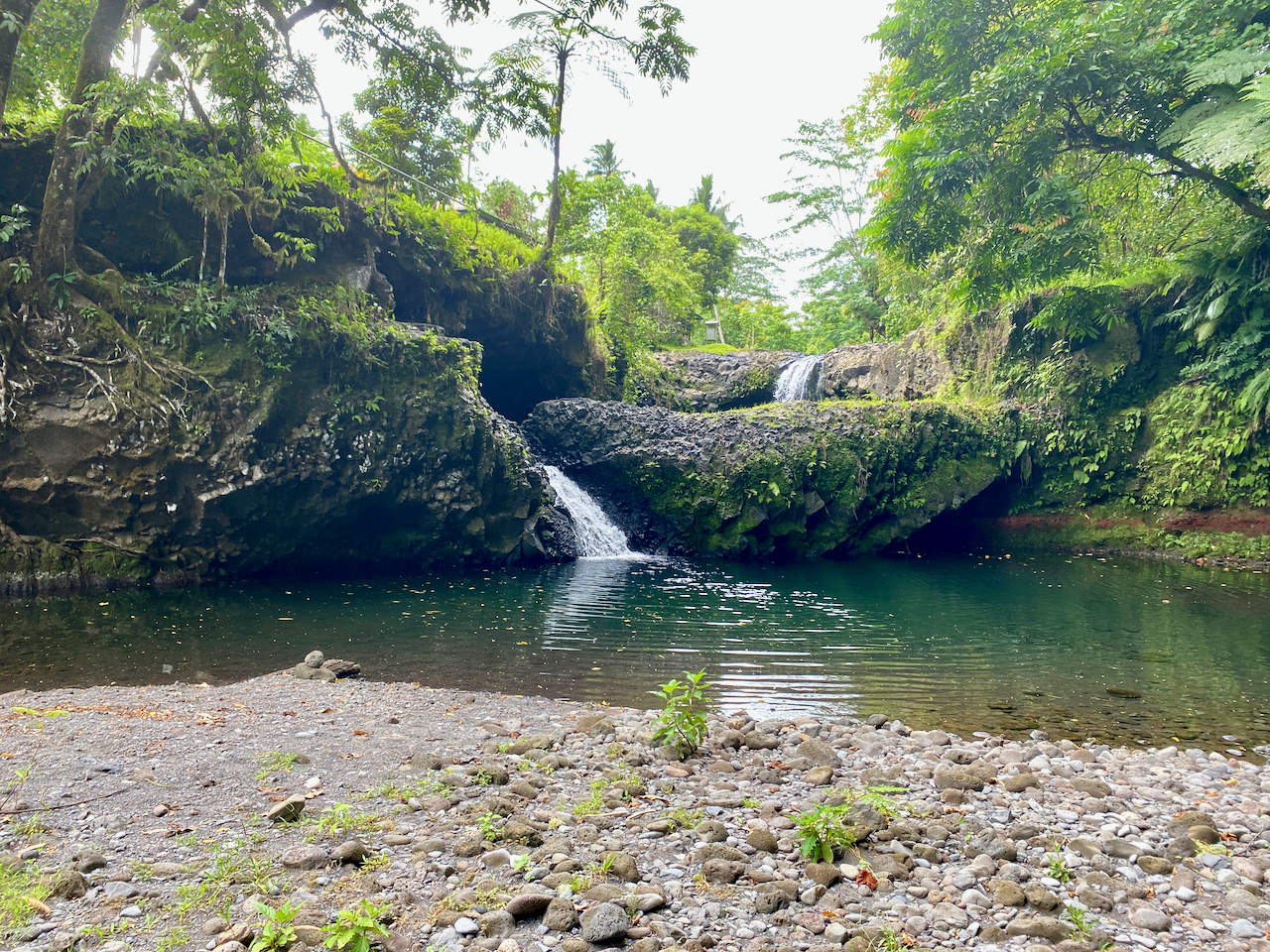
Sopoaga Falls
Near the Sua Ocean Trench, a well manicured garden surrounds a viewing platform looking across a river basin to the falls. Cost to enter this area is WST10, so only I checked it out, my family members deciding to sit this one out. While not as impressive as Papapapai Falls, the garden area is a place you could spend an hour chilling over a picnic lunch or similar. The river valley flowing away from the waterfall is also rather impressive, with great green walls disappearing into the distance.
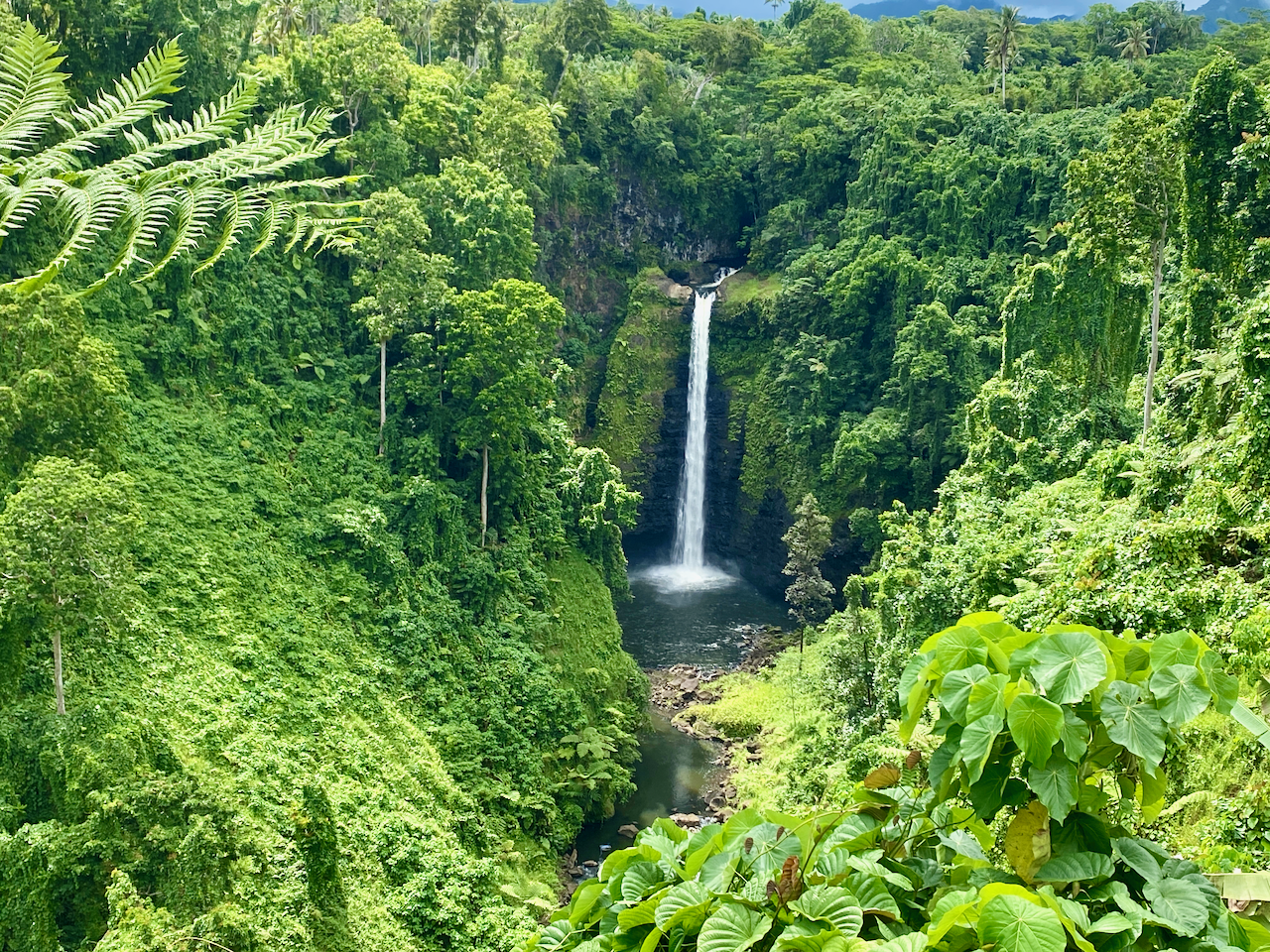
Fuipisia Falls
These 55m tall jungle falls are apparently spectacular, but at WST20 it was too rich for us to look at for a few minute viewing. This was however, the only waterfalls our other contingent stopped at, talking the land owner into dropping the price to WST10. Photo courtesy of them.
Falefa Falls
Near the north side of the island again, the final waterfall we visited was right by the road, and we stopped quickly to check it out. It’s only a short falls, with a river continuing to run out to sea, but apparently you can swim in it. We didn’t stop at the official garden entrance, but at the side looking down at it. But as we looked, a man came out of a fale 20m behind us and charged us WST5 to view it.
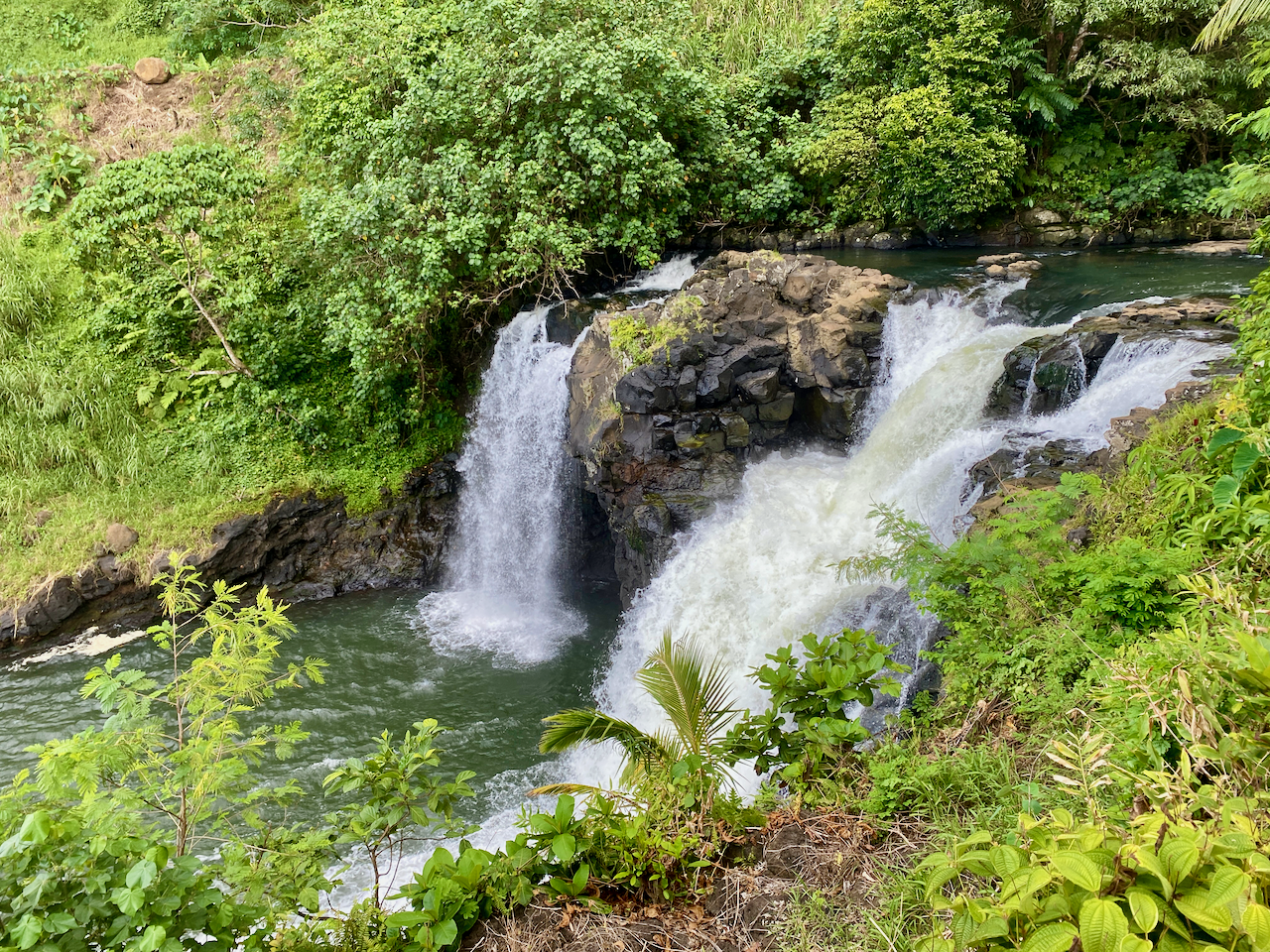
Parase’ea Sliding Rocks
Not far out of Apia are the Parase’ea Sliding Rocks. It’s one of those redundant double names like East Timor, which in East Timorese is literally East East. Parase’ea means ‘sliding rocks’ in Samoan. There are a trio of small waterfalls, all with somewhat smooth rocks that can be slid down into a pool at the bottom. Entry fee is WST5 each.
The top falls were the shortest and easiest to slide down (photo not included). The second and main slide is more dramatic and when you come down the 100 or so steps to the sliding rocks it’s the first you come to. The far side is the correct side, due to there being a deep enough pool. It’s nerve-racking sitting at the top and pushing yourself over, but it ends quickly enough with a splash at the bottom.
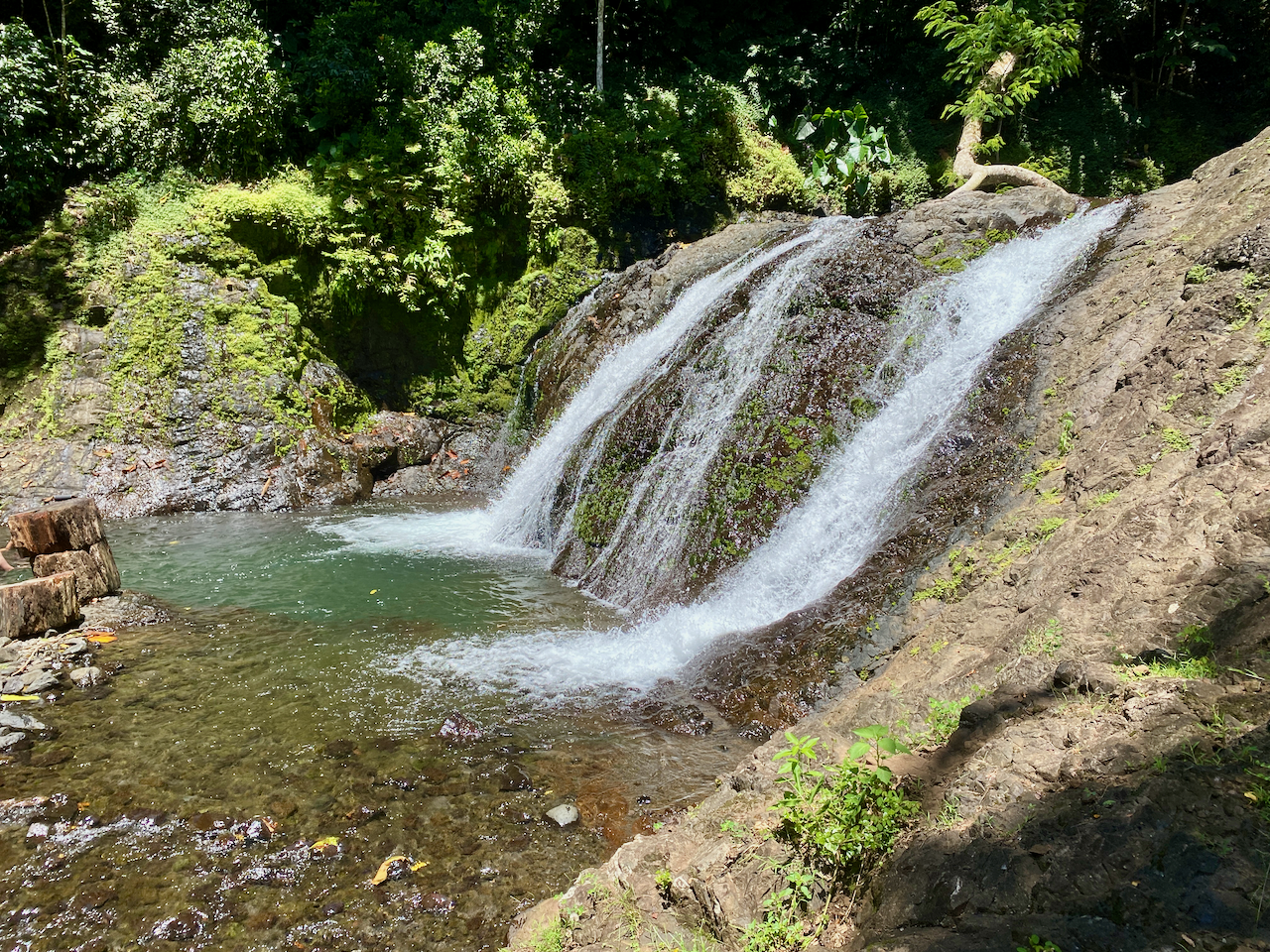
The bottom one has two parts. I called the first part the devil’s throat as it reminded me of the Iguazu Falls in South America. Sliding down into the pool surrounded by water from three sides.
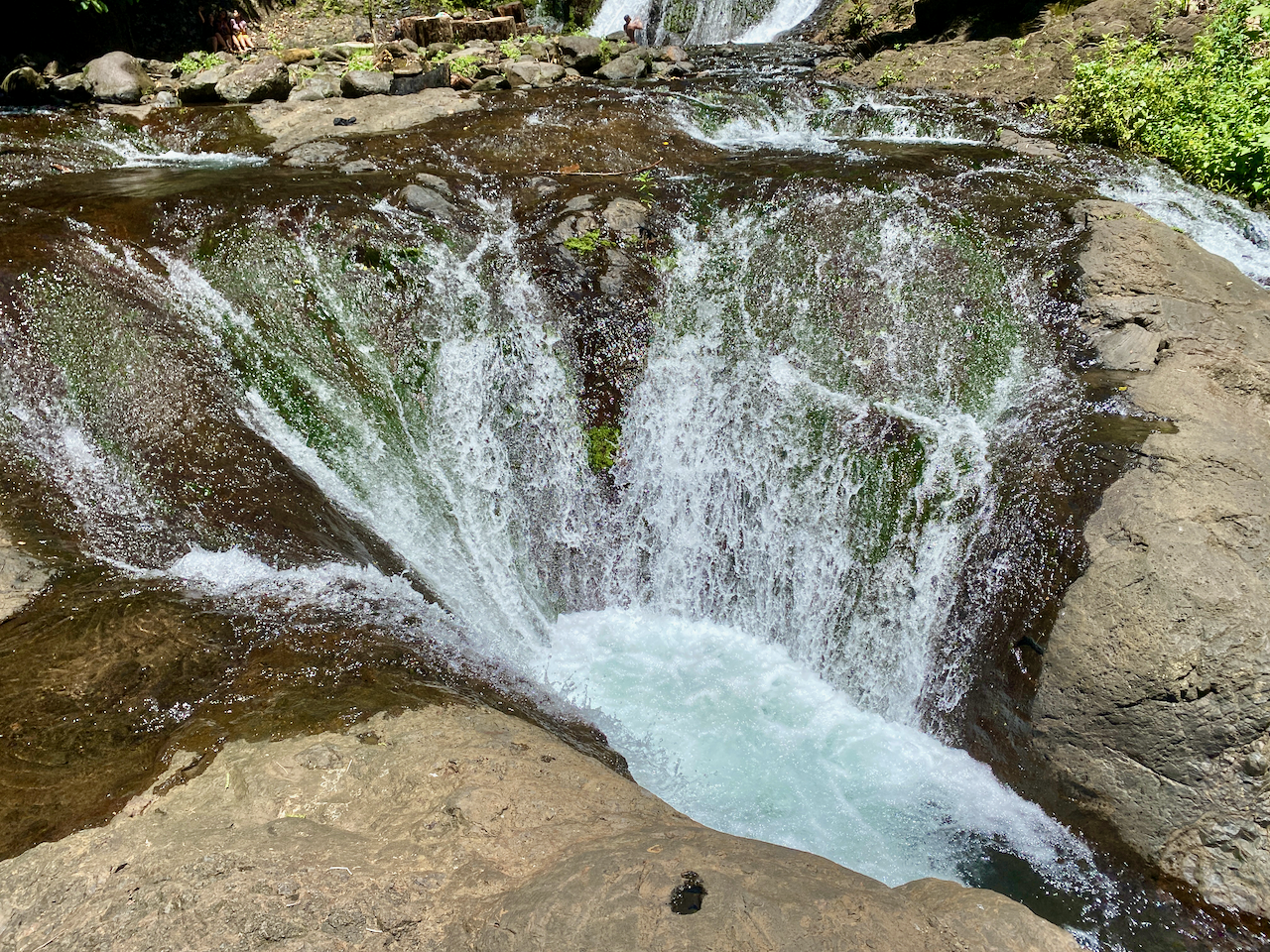
Then pushing up onto a lip and sliding down the next on the left side, gaining air at the end before dropping into a pool.
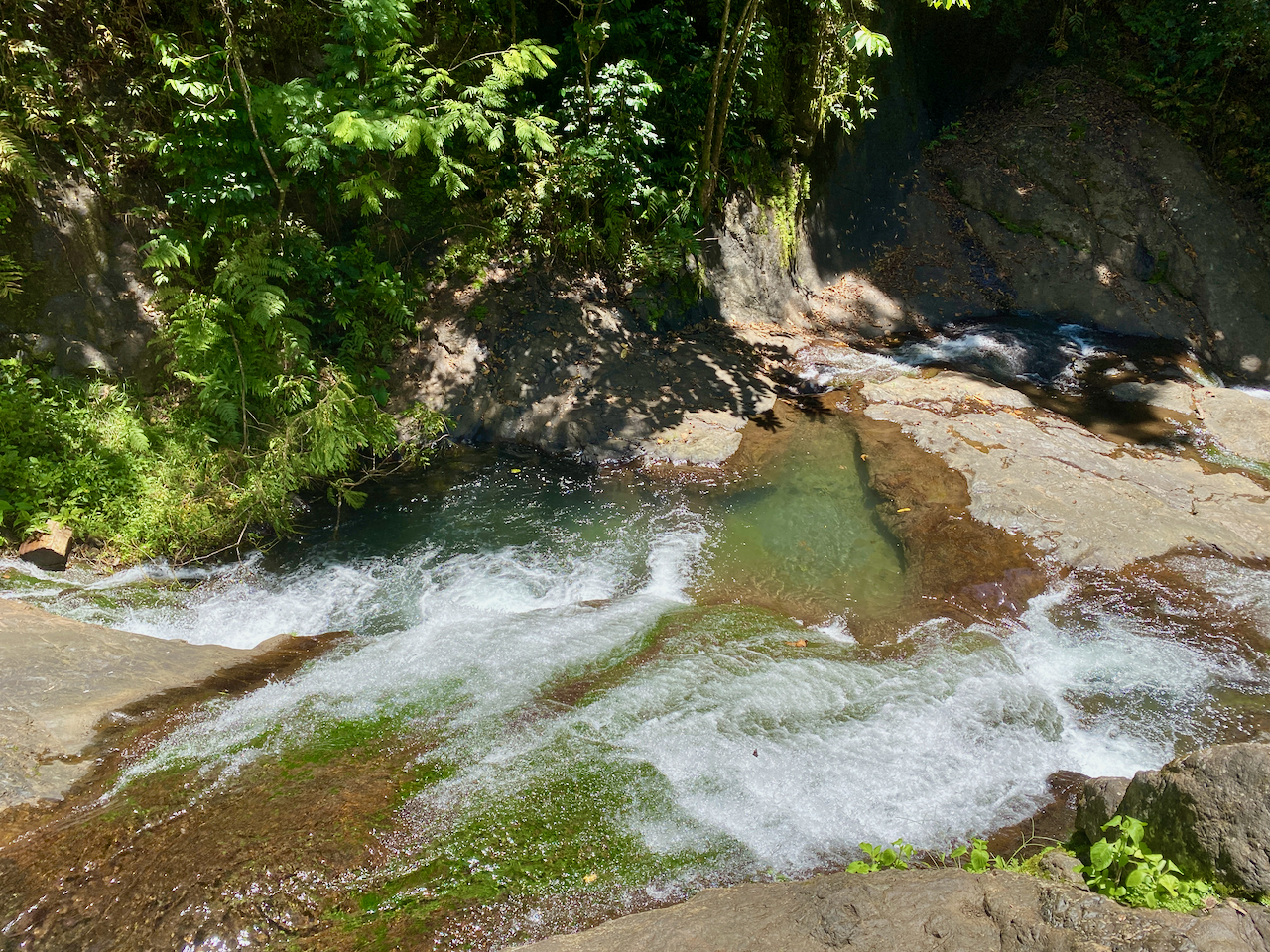
Then, once we were done, we climbed back to the carpark where there are great views down over Apia.
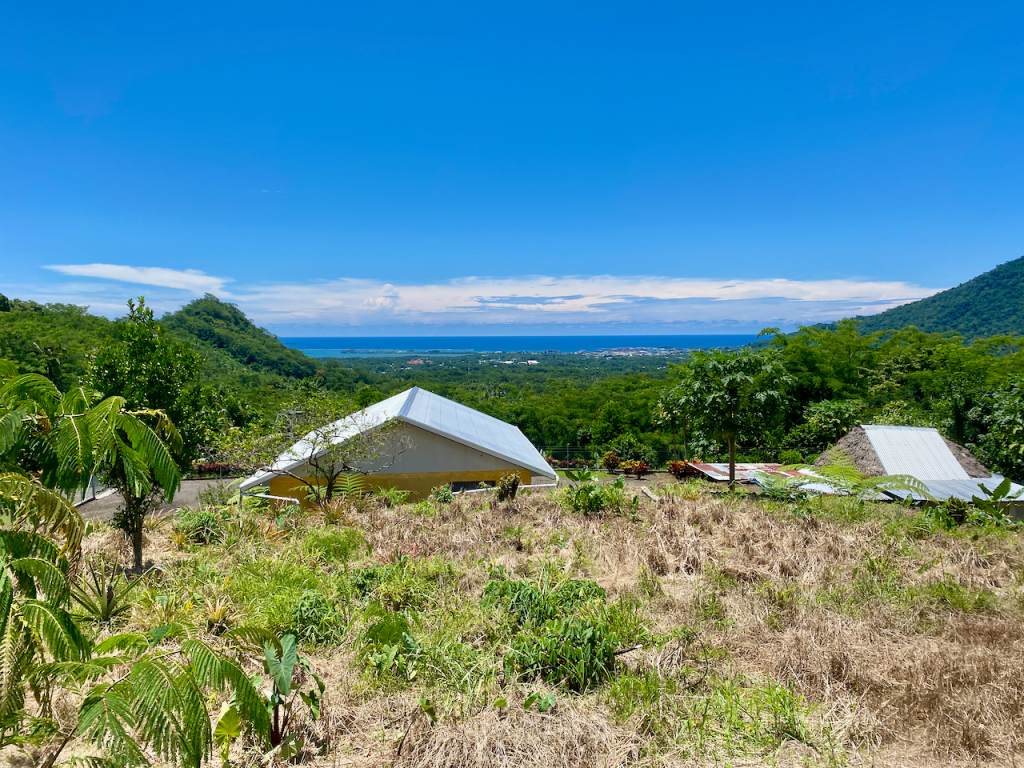
Robert Louis Stevenson Museum
Robert Louis Stevenson was a British writer born in 1850 who wrote such classics as Treasure Island and Strange Case of Dr Jekyll and Mr Hyde. Suffering from health problems for most of his life, he decided to move to the Samoa in 1889 where the climate greatly helped his condition. In 1890 he purchased land and had a large 2-story house built, the first in the country. He would die here four years later, but not before becoming a beloved advocate of the Samoan people.
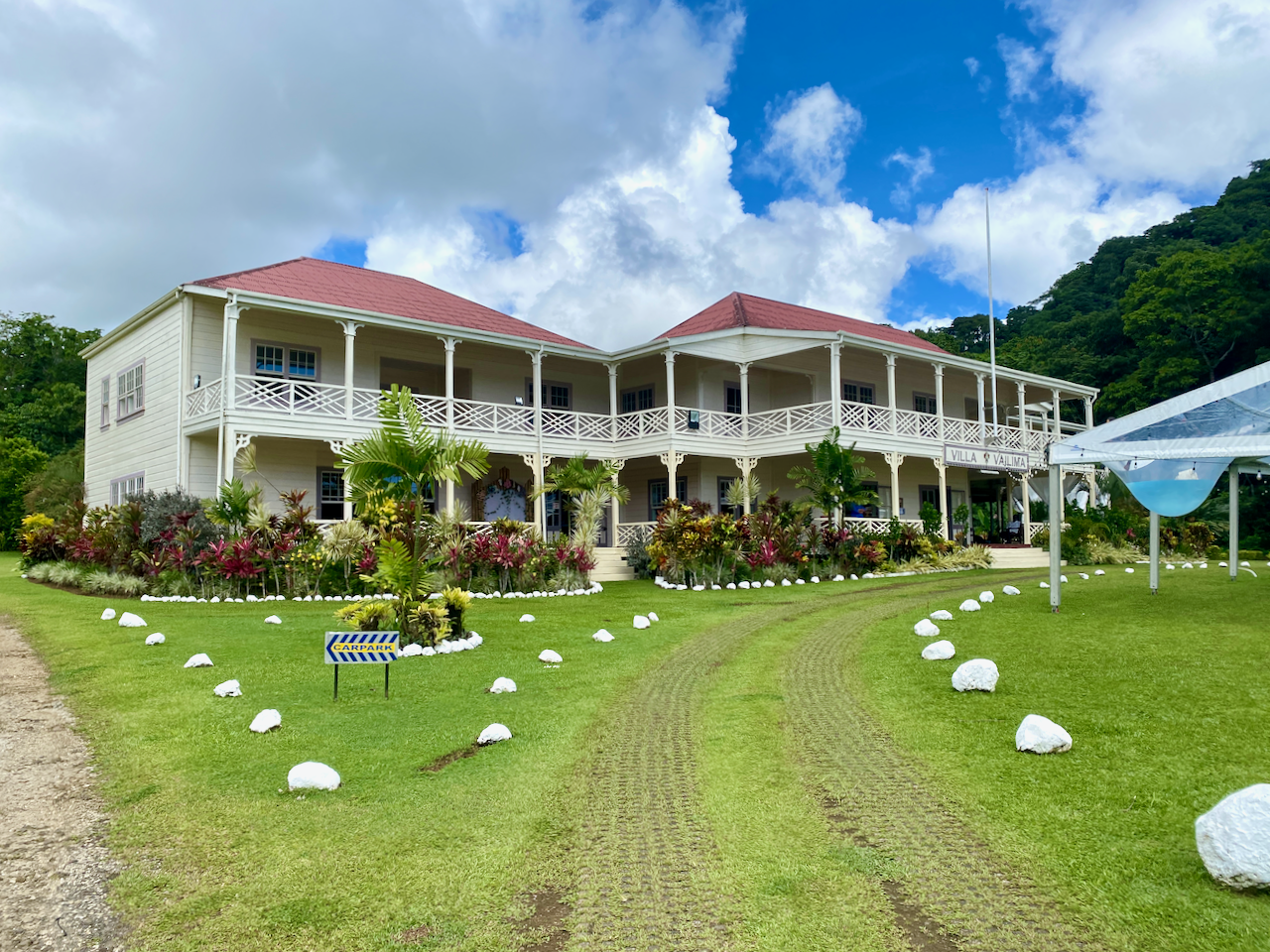
During the last days of my stay, I caught a taxi to his house, which has since been converted into a museum. I took the tour and heard tales of him, his wife, her 2 children from her previous marriage, and his mother.

On his sudden death in 1893, Samoans stood a vigil over his body for the night, before clearing a way to the top of the hill nearby where they carried his body, and laid it to rest. After the tour, I set off up a trail to the top of that hill. There are two paths, the short steep one, and the long, not so steep one. I climbed the short one, and dripping heavily with sweat in the 32º heat, stopped several times to catch my breath and check out the view.
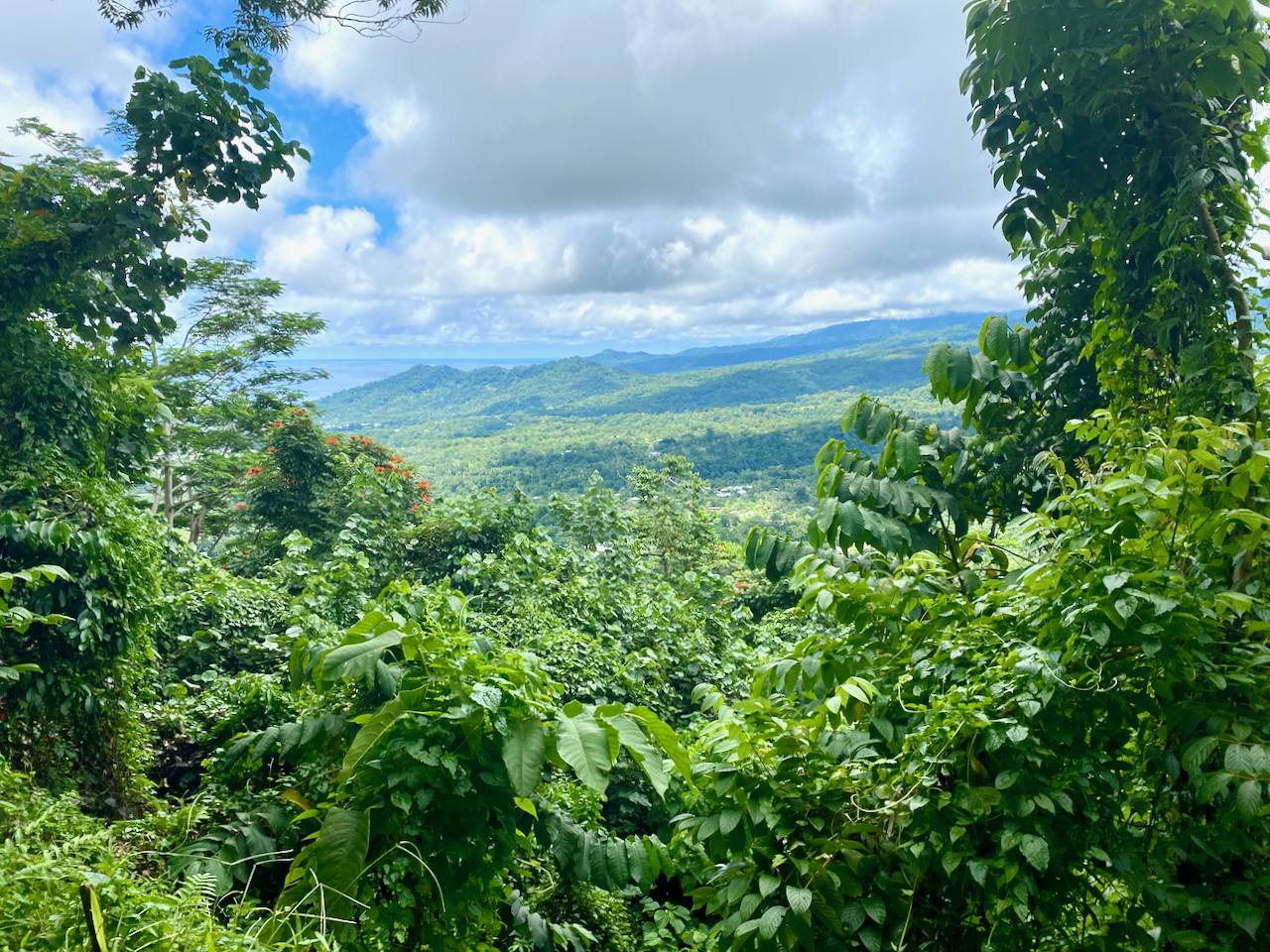
I finally reached the top where I found his resting place and a cool breeze.
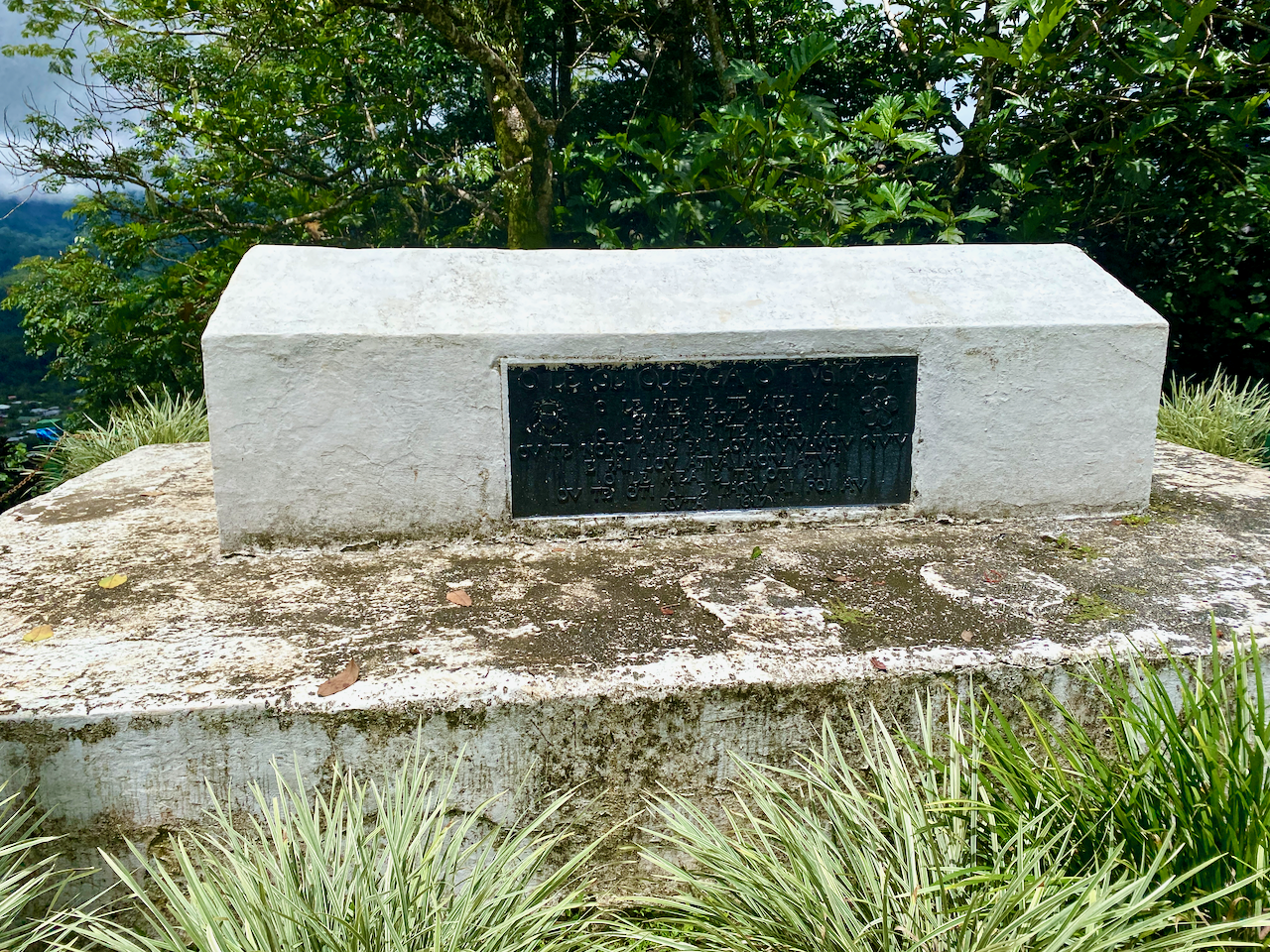
There were excellent views back down to his house and the surrounding area. When I was done, I decided to take the longer route back down again, which was certainly a lot longer and less step, along with being fairly muddy.
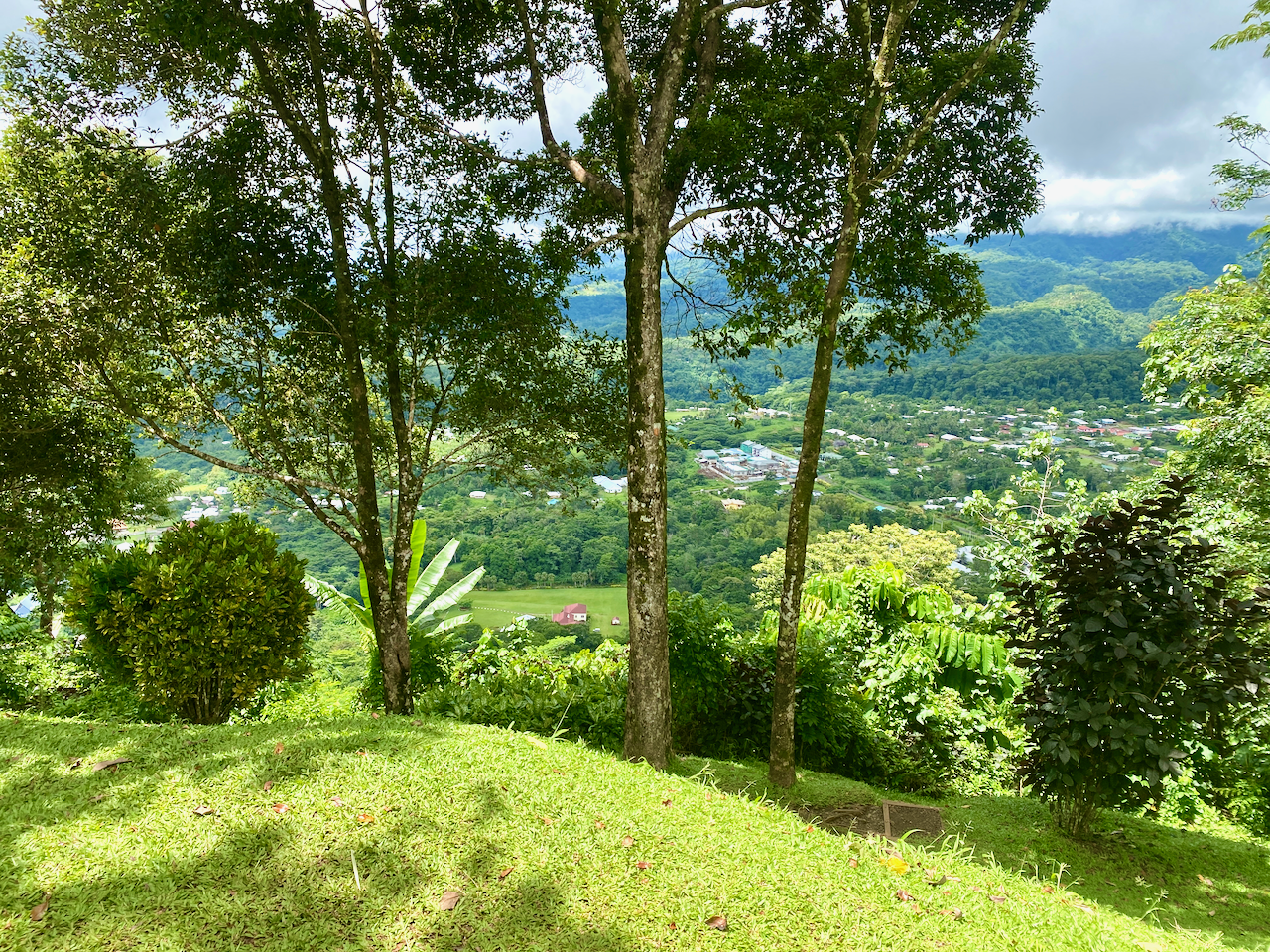
Impressions
Upolu wasn’t what I was expecting, especially after my month in Rarotonga a year ago. The number of cars racing everywhere, dozens of taxis taking people back and forth for next to nothing, the mass of people in Apia, then the quieter areas all over the rest of the island. The sheer number of Fales and villages was all an experience, especially in the 32 degree heat. The people are generally friendly wherever you go and the atmosphere is very laid back. It was a good time to see a new country, and spend time with the extended family while we scattered the ashes in the sea outside where my grandfather grew up.
The World Wanderer

